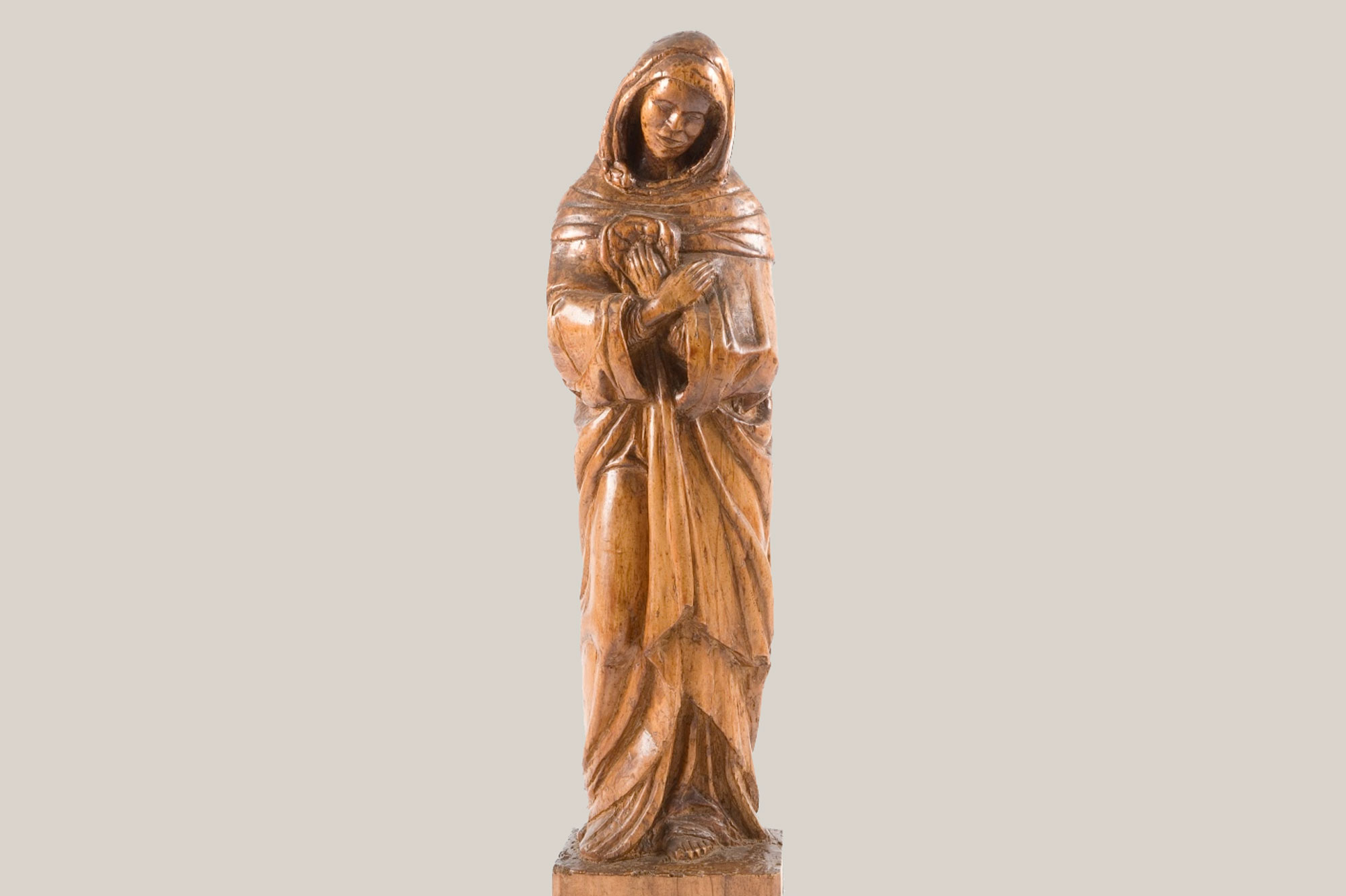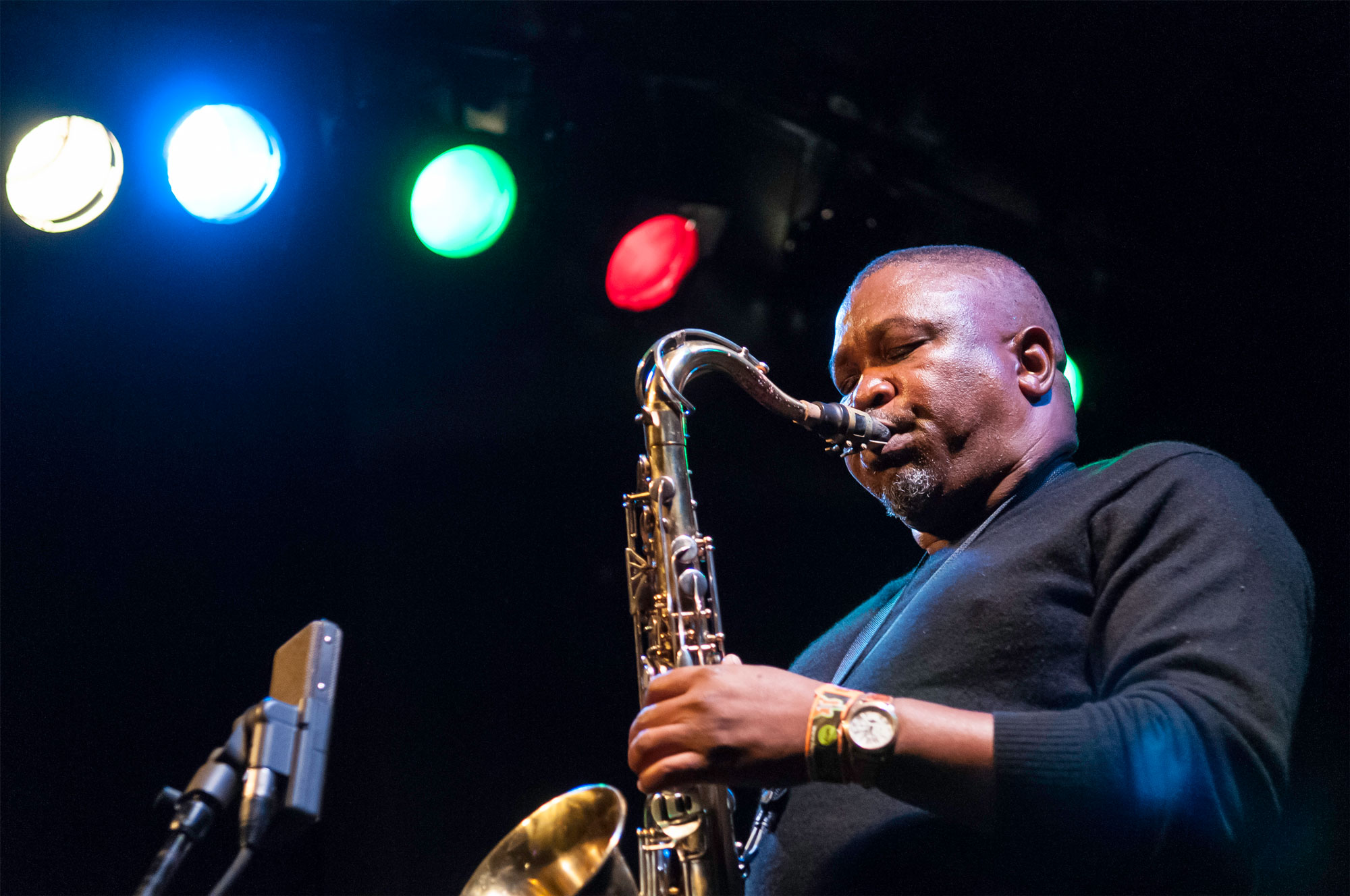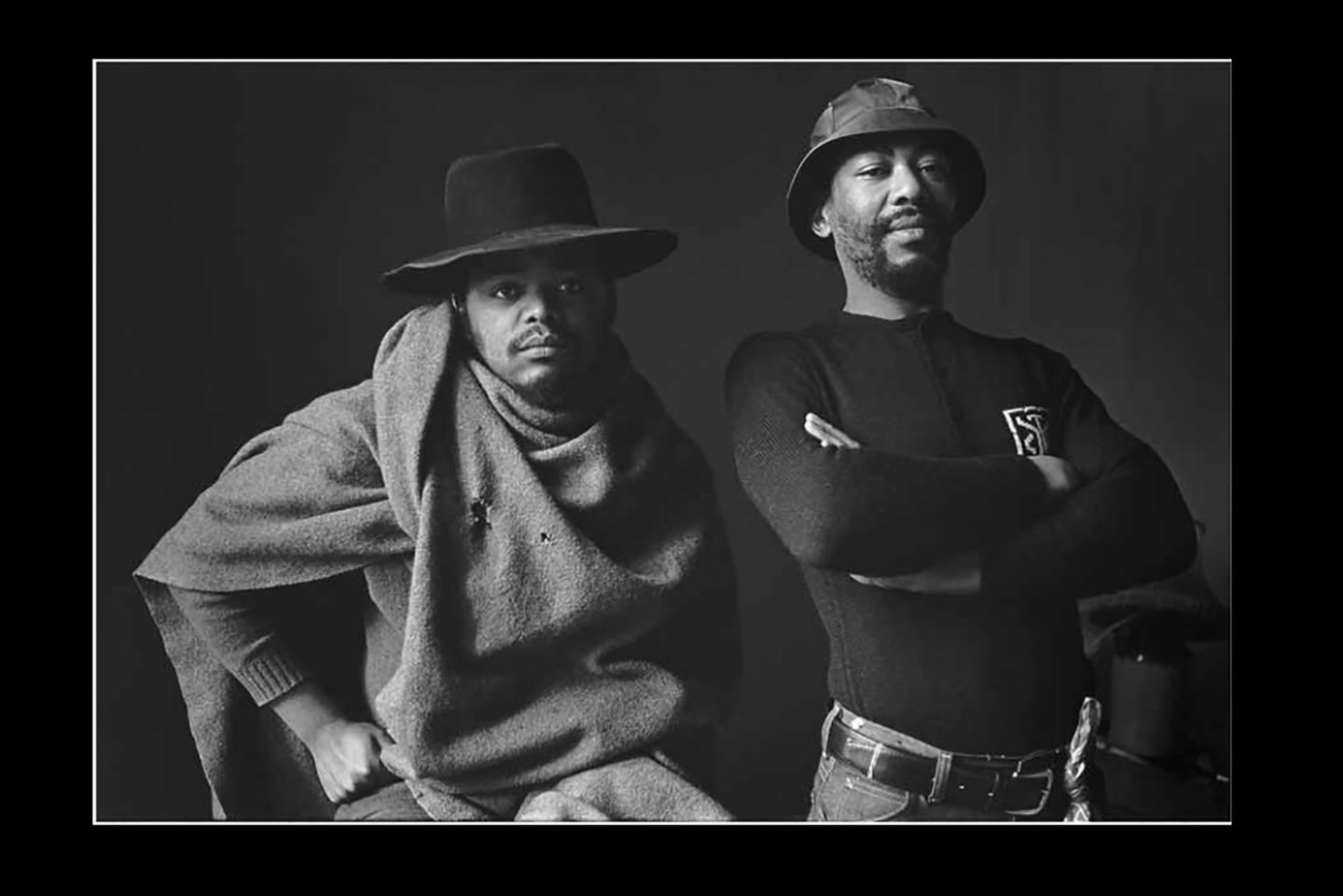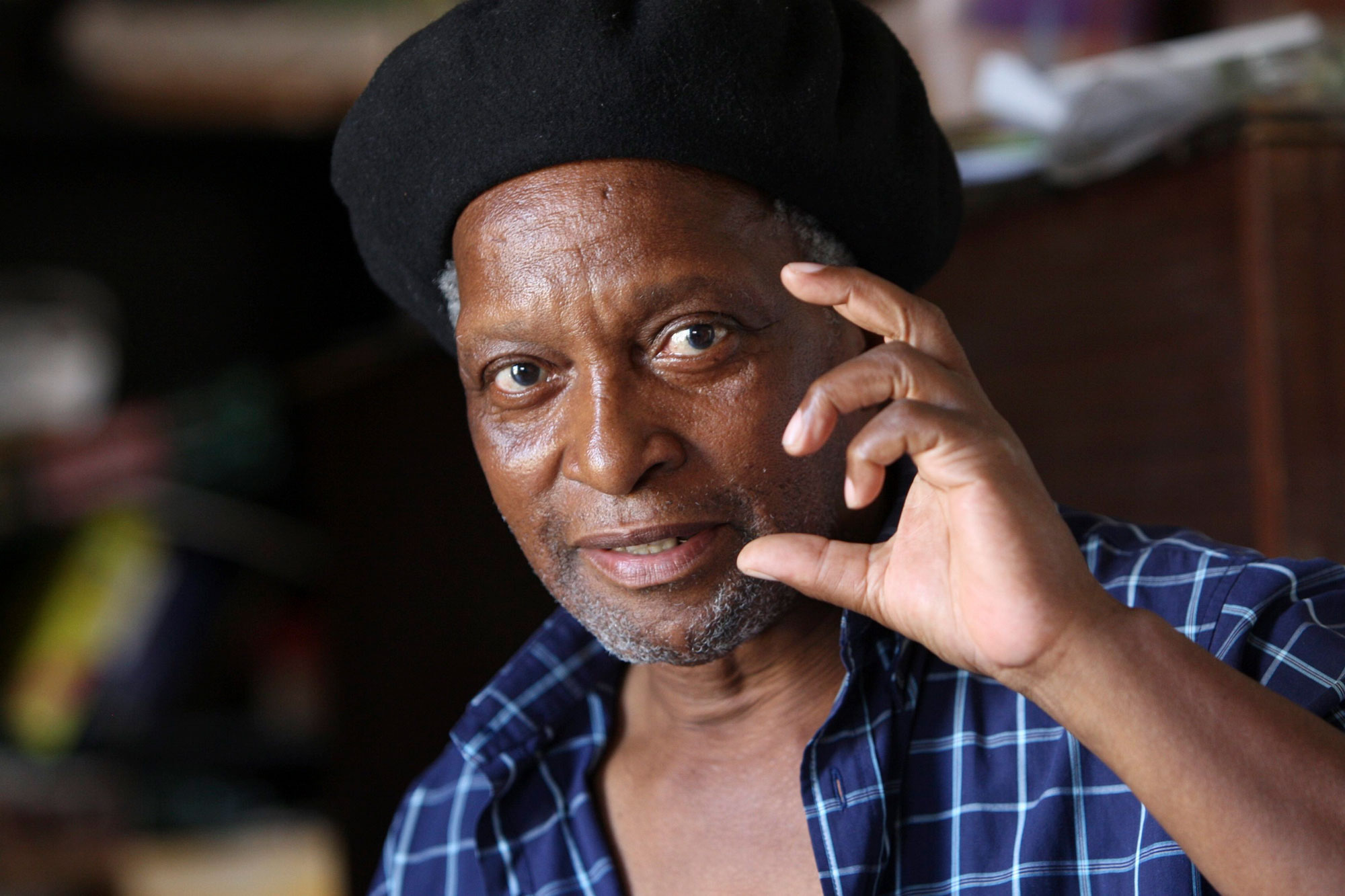Fugitive collaborations in art and jazz
South African jazz artists tend to immerse themselves in art spaces other than music. It is a visual and musical communing across forms that meet not only in artistry, but also in politics.
Author:
19 January 2022

There is a special heritage of artistic cross-pollination at the intersection of jazz music and the visual arts in the land of the fallen rand. It is a tradition of conscious creative practices that are promiscuously intertextual, sociopolitically committed and genre-defying.
As a result, South African art has been marked by notable collaborations between painters, poets and musicians on the pulse of the shared pains and pleasures of the people. Their legacies, rooted in community and collective inspiration, continue to shore up examples of art as a site of struggle, meaning-making and virtuosity.
Consider the recent collaboration that saw artist and art historian Thembinkosi Goniwe bring jazz bassist Herbie Tsoaeli, vocalist Sylvia Mdunyelwa and contemporary dancer Amy-Kay Klaasen together to improvise a performance around a seminal piece of modern sculpture by the late great Ernest Mancoba, The Bantu Madonna (1919).
They converged art, history, jazz music and contemporary dance into a singular creative experience. At the centre of the presentation, as Goniwe proposed, was a “performance that not only re-enacts but reimagines what a contemporary articulation of Mancoba’s [sculpture] can become”.

Importantly, Goniwe’s vision tests our ability to appreciate the meaning and impact of Mancoba’s The Bantu Madonna beyond the excesses of its title and storied content. He challenges us to enter the realm of aesthetics unencumbered by predetermined narratives.
While Goniwe sought to destabilise possibilities of meaning through his interdisciplinary collaboration, multidisciplinary artist Kemang wa Lehulere collaborated with jazz trumpeter and composer Mandla Mlangeni to expand the reach of his Bird Song Project. This was in 2017 and Lehulere was deepening his exploration of the late artist Gladys Mgudlandlu’s legacy. The work he presented for his Deutsche Bank Artist of the Year exhibition included video installations, assemblages and drawings. By stretching it to include a jazz record, he expanded the interpretative meaning of the idea of a song and the motif of birds in his work.
The limited edition vinyl album Lehulere produced with Mlangeni was strong enough as a musical project to stand on its own. However, its larger meaning and power was realised when heard in the context of Lehulere’s larger art oeuvre.
A history of collaboration
In January 2010, the Zimology Institute, a smallholding on the outskirts of Joburg, was vandalised. The institute belonged to saxophonist and visionary composer Zim Ngqawana. The premises were broken into and vandalised, with musical instruments and electrical wiring destroyed in a presumed search for copper and other recyclable metals.
In an effort to make sense of the violation, Ngqawana invited young pianist Kyle Shepherd for an invocation, an improvised performance art ritual. Together they scoured the debris scattered around the crime scene, spontaneously picking up random objects to make usable sounds. The result was a work of relational aesthetics – an imaginative response and comment on crime and the underlying sociopolitical conditions that make it possible. The performance was filmed and released on DVD, titled The Exhibition of Vandalism.
Ngqawana’s imaginative intervention along with Lehulere and Goniwe’s work aligned their respective visions with a long-standing heritage, a tradition of dynamism and collaborative form in art and jazz. They are marked by an artistic propensity for expansiveness that saw some of its early flowering in the thrust of the freedom struggle against apartheid.

As early as around 1966, poet and painter Lefifi Tladi and a cohort of young creatives in Ga-Rankuwa launched themselves as an art collective, DeOlympia. It became a community creative engine producing and performing poetry, theatre and music, putting together art exhibitions and workshops. Guided by empresario Geoff Mphakati, the work they made together was inspired and visionary. Above all, it eschewed separation between genres. They also started a museum of contemporary Black arts in a small, four-room house – it became a crucial cauldron of collaboration.
It was in this centre that the Malombo Jazz Messengers, who later became Dashiki, formed in 1969. The group included Tladi on African drums alongside graphic designer Rantobeng Makou on vibraphone, Gilbert Mabale on saxophone and flutes, and Laurence Moloisi on guitar. The Malombo Jazz Messengers was the third expression of the band Malombo Jazz Makers, which was formed by Philip Tabane, Abby Cindy and Julian Bahula early in the 1960s. As Tladi put it: “Dashiki was unique in the way we mixed poetry with music … We became functional in the context of Black consciousness politics.”
Their creative fervour attracted key figures of the then nascent Black Consciousness Movement to Ga-Rankuwa. There’s a now apocryphal story of a marathon meeting involving Steve Biko, Mandla Langa, Mafika Gwala, Mofuna Bokao and others. The movement’s leaders were famously held to a non-stop debate lasting more than 70 hours in a four-room house crowded with artworks, jazz records and pan-African books. The debate, laughter and impromptu performances that ensued revolved around the centrality of the arts in community and consciousness-building. Importantly, it shaped much of what we think of as the Black Consciousness Movement cultural committee policy on art and culture. A decade later, as this generation of artists was pushed into exile, this legacy would be inherited by the ANC in Botswana with the formation of collectives such as the Medu Art Ensemble. It came to head at the Culture and Resistance Conference in 1982.
Nhlengethwa and Feni
It is possible to argue that among South African artists working through the turn of the last century to date, Sam Nhlengethwa’s jazz pedigree is without rival. He is who many casual art lovers think of when the two words “art” and “jazz” are placed together. Music is central to Nhlengethwa’s art practice. He often waxes lyrical about the centrality of jazz music to his studio culture and picture-making. As he put it: “In an ensemble, there are styles that include vocal colour, call-and-response patterns and rhythmic complexities played by different members. My jazz collages, with their distorted patterns, attempt to communicate all of this.”
There’s an early drawing that Nhlengethwa made to celebrate saxophonist Barney Rachabane and bassist Victor Ntoni in 1990. It depicts the duo mid-performance as a constellation of energy. The drawing is an improvised and spontaneous composition of dynamic lines and rhythmic marks and shades. Though Nhlengethwa offers it as a portrait of two musicians, he does not labour to capture their likeness. It is about how it felt like to see and sense the players together in that moment. This is the same way a song would function as a portrait or a dedication: a sonic construction of melodic lines, rhythms and phrases.
At this intersection of languages of music and drawing, Nhlengethwa is in lofty company. He has Dumile Feni as a glorious forerunner.
Feni’s career is arguably as much about his sculpture and drawing as it is about his love and work with music and musicians. Much of Feni’s work involved studies of musicians and dancers at work. Further, many of the photographs of the artist that survive picture him in the company of musicians. Photographer Omar Badsha once noted that Feni “was mostly friends with musicians and not so much other visual artists. Music was very important to him.”

The importance of music in Feni’s practice is perhaps best illustrated by his role in the story of Yakhal’inkomo, a landmark jazz composition and record in South Africa. Yakhal’inkomo, which can be translated to “the cow is bellowing”, is a jazz record about bearing witness to the suffering of oppressed Black people during apartheid. Composed by the late great saxophonist Winston Mankunku Ngozi, the mythology that evolved around the song begins with a story told by Feni, carried in the sleeve of the record, and in an anthology of poems by Mongane Wally Serote.
Serote recalls: “Dumile, the sculptor, told me that once in the country he saw a cow being killed. In the kraal, cattle were looking on. They were crying for their like, dying at the hands of human beings. Yakhal’inkomo. Dumile held the left side of his chest and said that is where the cry of the cattle hit him … Yakhal’inkomo. The cattle raged and fought, they became a terror to themselves.” In this way, Feni would reverberate in music, visual arts and, as a result of Serote’s poetry, in literature. Flowing from this historical moment with Yakhal’inkomo, Feni would increasingly employ the cow motif as metaphor to address pressing social issues in his work.
Further, Feni’s propensity to straddle the music and visual worlds has seen his works used as record cover art too. Notable among these is Hugh Masekela’s Home Is Where the Music Is, a record whose title implicates a poem by Keorapetse Kgositsile, written in ode to the trumpeter, completing a circle of creative kinship.
Drawings and the jazz records
In 1968, while Feni was making his way into exile, the great bassist and visionary composer Johnny Dyani, who had made the treacherous journey four years earlier with fellow band members of the Blue Notes, was finding his way into visual arts.
Dyani is easily one of the most important jazz bassists to come out of South Africa, period. A lesser-known fact about the composer, as Lars Rasmussen writes, is that “Johnny often made drawings that corresponded with his song title”. In this way, though his creative ability as a musician was renowned, he sought to expand his expression through a visual medium too. Rasmussen’s biographical collection, Mbizo: A Book About Johnny Dyani, includes a number of his drawings and caricatures. They document a lifelong practice that Dyani maintained alongside his musicianship.

In his book, Rasmussen takes a moment to correct a misappropriation of a drawing by Motlhabane oa Mashiangoako on the sleeve of Dyani’s 1981 record, Some Jive Ass Boer. The intervention hints at the long history of jazz record covers as carriers of contemporary art images. In South African jazz during the 1980s, Fikile Magadlela was among those setting the pace for album cover art. His work marked some of the key records of that era. Among these were supergroup Sakhile’s eponymous 1982 release, Rachabane’s Barney’s Way in 1989 and Ezra Ngcukana’s You Think You Know Me.
In our contemporary moment, Mzwandile Buthelezi’s drawings have become a uniquely favoured option by many leading jazz musicians. Pianist Thandi Ntuli chose Buthelezi’s unique style for her coming-out record, The Offering, in 2014 and Benjamin Jephta did it with his Homecoming in 2015, along with many others that coalesce to define new jazz’s culture of design.
The intersection of jazz and visual arts is ever rich, promiscuously cross-pollinating and charged with inspiration. It is kept productive by creatives with an eye on making more of their work than the seductions of market and edifice. In turn, communities of audiences are made better for it.
